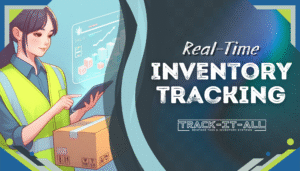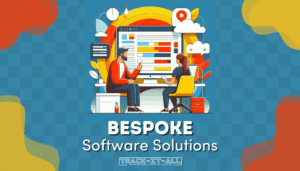Key Takeaways
- Employee management systems can help streamline HR processes and increase efficiency.
- These systems provide features such as attendance tracking, performance evaluation, and payroll management.
- Examining the features and functionality of employee management systems can help businesses choose the right solution.
Benefits of Employee Management Systems
If you want to improve your company’s workforce management, implementing an employee management system could be the solution you need. These systems offer many benefits to businesses in South Africa, including:- Streamlined Administrative Tasks: HR software can automate routine administrative tasks, such as attendance tracking and payroll management, freeing up time for HR professionals to focus on more strategic activities.
- Improved Employee Productivity: Employee management systems provide employees with self-service portals, which allow them to access their performance data and other relevant information. Offering such access to employees can increase engagement and motivation and, in turn, improve productivity. Real-time communication and collaboration tools included in these systems also boost productivity.
- Maintaining Accurate and Up-to-Date Records: Employee management systems allow you to centralize all HR data in one place. This means that you can track everything from recruitment data to performance tracking to attendance records. Having all of this information in one location ensures that you can easily retrieve the data you need for decision making.
- Data Analytics: Employee management systems come with reporting and analytics capabilities that enable you to analyze employee data and HR processes. This allows you to identify trends and patterns in performance, absenteeism, and other key metrics, which can help you optimize procedures within your business processes.
Features of Employee Management Systems
Employee management systems come with various features that cater to different business needs. These features can include:| Feature | Description |
|---|---|
| Employee Self-Service Portals | Allows employees to access their HR information, request leave, and update personal details. |
| Time and Attendance Tracking | Enables accurate tracking of employee working hours, breaks, and overtime. |
| Performance Evaluation Tools | Helps managers evaluate employee performance, set goals, and provide performance feedback. |
| Leave Management | Allows employees to request leave and managers to approve or deny leave requests. |
| Training Modules | Enables businesses to create and manage training courses, track employee progress, and monitor compliance. |
Functionality of Employee Management Systems
Employee management systems offer a range of functionalities that can improve the efficiency of HR processes in your business. By examining the different functionalities of various systems, you can choose the one that best aligns with your operational needs. Here are some of the key functionalities to consider:| Automated notifications: | An employee management system should send automated notifications for policy updates, leave approvals, performance reviews, and other important HR-related tasks. This ensures that everyone is on the same page and that deadlines are met. |
|---|---|
| Payroll integration: | Integration with your payroll system is essential for accurate and timely payment of your employees. An employee management system that seamlessly integrates with your payroll software can reduce errors and administrative workload. |
| Reporting and analytics: | An employee management system should have robust reporting and analytics capabilities that assist you in making data-driven decisions concerning your workforce. These reports can provide insights into employee performance, attendance, and other HR metrics. |
| Customizable workflows: | Your business has unique HR processes that require a tailor-made approach. An employee management system that provides customizable workflows allows you to automate your HR processes while maintaining flexibility. |
Considerations for Choosing an Employee Management System
Choosing the right employee management system can be a daunting task, but it is essential to ensure effective management of your workforce. Below are some considerations to keep in mind when selecting an employee management system for your South African business:- Size of your workforce: Whether you have a small or large workforce, your employee management system should be able to handle your business’s needs. It should have the capacity to scale and accommodate growth over time.
- Level of customization required: Your business may have unique requirements that are not addressed by a standard employee management system. Consider an option that can be tailored to your specific needs.
- Integration with existing systems: Your employee management system should be compatible with other systems used by your business, such as payroll software and time and attendance systems. Seamless integration ensures data accuracy and eliminates the need for manual data entry.
- Scalability: Your employee management system should have the capacity to grow with your business and accommodate future expansion.
- Data security: Ensure the employee management system you choose has adequate security features to protect sensitive employee data. It should comply with relevant data protection laws in South Africa.
- Track it all: The employee management system should allow you to track all employee-related activities, including attendance, performance, and training, among others. This ensures that all aspects of your HR processes are streamlined and efficient.
Employee Management Systems in South Africa
In South Africa, employee management systems have become an essential tool for businesses of all sizes. With a growing market of local and international providers offering their solutions, businesses have a range of options to choose from. These systems come in different forms, including cloud-based systems, on-premises solutions, and hybrid models. Whichever option you choose, employee management systems provide a comprehensive solution for streamlining your HR processes. HR management systems offer a wide range of features, including payroll management, time and attendance tracking, performance management, and employee self-service portals. These systems not only automate manual HR tasks but also provide valuable insights through analytics and reporting tools. By implementing an HR management system, businesses can improve efficiency, reduce errors, and ultimately enhance the overall employee experience. By implementing an employee management system, you can track it all – from attendance and performance to leave and training – on one platform, simplifying your HR processes and improving overall efficiency. You can automate routine tasks, reducing administrative errors and enabling your HR team to focus on more strategic initiatives. When selecting an employee management system, it is important to assess the specific needs of your business and the level of support and maintenance offered by the system provider. By choosing the right system, you can drive productivity, increase employee engagement, and ultimately, achieve your business objectives.Implementation and Training of Employee Management Systems
Implementing an employee management system requires careful planning and preparation. Firstly, ensure that you select the right system that caters to your business needs. Once the right system is chosen, you need to prepare for the implementation process. Start by creating a project plan that outlines the implementation process and sets realistic timelines. This will help you keep track of progress and ensure that the implementation stays on track. It is crucial to involve all stakeholders in the implementation process and keep them informed of any changes or updates. One of the most important aspects of the implementation process is training employees on the new system. It is essential to provide comprehensive training that covers all aspects of the system, including its features and functionalities. This may involve conducting training sessions, providing user manuals, and offering ongoing support. During the training process, encourage employees to ask questions and provide feedback. This will help identify any issues that need to be addressed and ensure that employees are comfortable using the new system. Remember to emphasize the importance of data accuracy and encourage employees to “track it all” on the new system. A smooth implementation and comprehensive training can maximize the benefits of the employee management system. Don’t rush the process or skip any steps. Take the time to do it right, and your business will reap the rewards of an efficient and effective employee management system.Brief for Section 8:
ROI of Employee Management Systems
Investing in an employee management system can provide a significant return on investment for your business. By streamlining HR processes, reducing administrative errors, and improving employee productivity, you can achieve cost savings and increased efficiency. It is important to evaluate the potential ROI of an employee management system before making a decision. Track it all with an employee management system. This sort of software enables you to keep track of numerous HR processes, from attendance and performance tracking to payroll management and reporting. By automating these processes, you can minimize errors and free up time for your HR team to focus on more strategic initiatives. In addition to improving efficiency, an employee management system can also boost employee productivity and engagement. By providing tools for effective communication and collaboration, such as employee self-service portals and performance evaluation tools, you can empower your workforce and promote a culture of transparency and accountability. When calculating the ROI of an employee management system, consider factors such as the cost of implementation, ongoing maintenance and support, and the potential cost savings associated with reducing administrative errors and streamlining HR processes. By conducting a thorough evaluation, you can make an informed decision and select an employee management system that provides the best value for your business.Integration with Other Systems
When evaluating an employee management system, it is important to consider its integration capabilities with other systems used by your business. Seamless integration ensures data accuracy, eliminates manual data entry, and improves overall efficiency. Many employee management systems offer integration with payroll software, time and attendance systems, and other HR-related applications. Make sure to choose a system that can easily integrate with the systems you currently use, and ask the vendor about the ease and cost of customization. By integrating your employee management system with other systems, you can track it all in one place and manage your HR operations more effectively.Conclusion
Choosing the right employee management system can be a game-changer for your business in South Africa. By examining the features and functionality of different systems, you can find the one that fits your specific needs. Remember to consider the size of your workforce, the level of customization required, integration with existing systems, scalability, and data security. Once you have selected your system, proper implementation and training are crucial to ensure a smooth transition and maximum benefits. Make sure your employees are trained to effectively use the system and understand its functionalities to improve their productivity. By using an employee management system that integrates with other systems such as payroll and time and attendance, you can track it all in one place, ensuring data accuracy and improving overall efficiency. Proper integration can save you time and reduce administrative errors. Most importantly, choosing the right employee management system can provide a significant return on investment for your business. By streamlining HR processes, reducing administrative errors, and improving employee productivity, you can achieve cost savings and increased efficiency. Choose wisely, and your business will reap the rewards of an efficient and effective employee management system.What Are the Benefits of Using Personnel Management Tools for Employee Management?
Effective employee management is vital for any organization’s success. With the help of personnel management tools, businesses can streamline various processes and enhance productivity. These tools assist in tasks like recruitment, onboarding, scheduling, and performance evaluations, simplifying complex workflows. Moreover, personnel management tools provide centralized information, allowing managers to make informed decisions and provide timely support to employees. This ultimately improves overall efficiency and boosts employee satisfaction, contributing to higher retention rates.
How Can Employee Management Systems Improve Task Efficiency?
Employee management systems, such as task management software South Africa, have proven to enhance task efficiency. With these advanced tools, companies can streamline processes, allocate tasks effectively, and monitor progress in real-time. By fostering better communication and automating workflows, such systems empower employees to work more productively and achieve desired outcomes accurately and efficiently.







